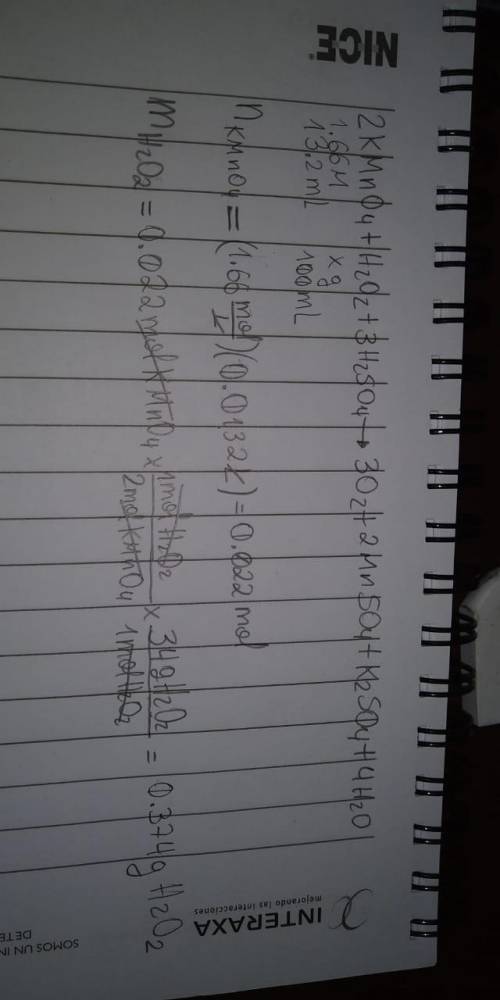
Chemistry, 21.09.2019 05:30 uh8hardiek
Redox titrations are used to determine the amounts of oxidizing and reducing agents in solution. for example, a solution of hydrogen peroxide, h2o2, can be titrated against a solution of potassium permanganate, kmno4. the following equation represents the reaction: 2 kmno4 (aq) + h2o2 (aq) + 3 h2so4 (aq) → 3 o2 (g) + 2 mnso4 (aq) + k2so4 (aq) + 4 h2o (l) a certain amount of hydrogen peroxide was dissolved in 100. ml of water and then titrated with 1.66 m kmno4. what mass of h2o2 was dissolved if the titration required 13.2 ml of the kmno4 solution?

Answers: 3


Another question on Chemistry

Chemistry, 21.06.2019 16:20
Aluminum reacts with chlorine gas to form aluminum chloride via the following reaction: 2al(s)+3cl2(g)→2alcl3(s) what is the maximum mass of aluminum chloride that can be formed when reacting 32.0 g of aluminum with 37.0 g of chlorine? express your answer to three significant figures and include the appropriate units.
Answers: 2

Chemistry, 21.06.2019 23:30
For the following dehydrohalogenation (e2) reaction, draw the zaitsev product(s) resulting from elimination involving c3–c4 (i.e., the carbon atoms depicted with stereobonds). show the product stereochemistry clearly. if there is more than one organic product, both products may be drawn in the same box. ignore elimination involving c3 or c4 and any carbon atom other than c4 or c3.
Answers: 3

Chemistry, 22.06.2019 05:50
According to coulomb's law, how would the electrical force between particles change if the product of their electrical charge increased?
Answers: 1

Chemistry, 22.06.2019 09:00
Particles vibrate in a rigid structure and do not move relative to their neighbors.
Answers: 1
You know the right answer?
Redox titrations are used to determine the amounts of oxidizing and reducing agents in solution. for...
Questions


Mathematics, 16.01.2021 16:10





















